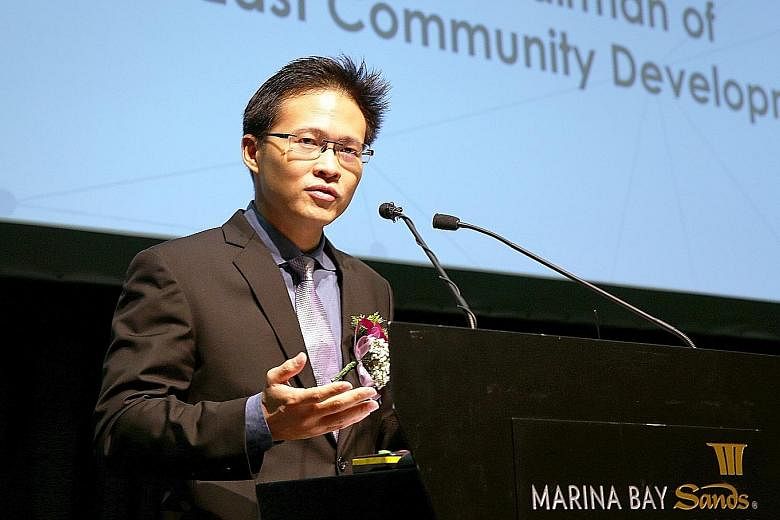Designing buildings with security in mind will help save lives and reduce longer-term security costs, said Mr Desmond Choo, chairman of the North East Community Development Council.
Addressing delegates from the building, architecture, security and facility management industries at an industry convention yesterday, he pointed to the devastating attack by a lone gunman who killed 58 people at a music festival in Las Vegas on Sunday.
"Security threats and attacks are increasingly becoming an unfortunate norm... It requires building owners to incorporate security measures in their building design," he said, highlighting the need for the new Infrastructure Protection Act (IPA).
The Act, passed in Parliament on Monday, is intended to form a clear regulatory framework and comprehensive strategy to fight terror.
Buildings with iconic or symbolic significance, and those that provide essential services and have high footfall, will have to include security features such as barriers or enhanced closed-circuit television capabilities.
The law will also give security personnel at sensitive installations the power to question and inspect a suspicious person's belongings and order him to leave the premises.
Taking photographs or video footage of these installations without authorisation will also be illegal.
-
Photographers raise concerns
-
The recently passed Infrastructure Protection Act (IPA), which aims to enhance building security against terror attacks, has got photographers - both amateur and professional - debating how much it affects them.
Under the new law, taking photographs or video footage of protected or sensitive buildings is illegal.
Photographers have discussed in closed groups on Facebook what would happen if sensitive buildings appear in the backgrounds of their photos. Some also wondered if they would be held liable for posting or sharing online old photos of buildings that were taken before the IPA was passed.
Landscape and architectural photographer Darren Soh, 41, told The Straits Times: "I hope that the MHA (Ministry of Home Affairs) would clarify more specifically what is permissible and what is not, and also publish a list of all protected buildings and areas for the public to digest, because not all protected buildings may have obvious signs and notices prohibiting photography."
Zaihan Mohamed Yusof
Second Minister for Home Affairs Josephine Teo told Parliament on Monday that "today's terrorists typically target crowded places or iconic buildings".
"Potential attacks overseas have been stopped by vigilant guards in the surrounding area of a sensitive facility," she added.
Mr Choo, who is also an MP for Tampines GRC, was the guest of honour at the Architecture & Building Services 2017 event, held at the Marina Bay Sands Convention Centre.
Singapore Institute of Architects vice-president Seah Chee Huang and executive director Fong Hoo Cheong welcomed the IPA, as it brings various aspects of building security under a single piece of legislation. Having building owners, designers and architects work together on security will also help create a much safer environment, they added.
Yet, there are some concerns over the deployment of high-tech and complex security systems in new buildings. Among these concerns are the cost and maintenance of the new security measures, and how they would affect day-to-day operations.
Mr Tony Khoo, president of the Singapore chapter of the International Facility Management Association, told The Straits Times: "For facility managers, we look at not only upfront costs, but also what we call total assets life cycle cost. There is an initial investment, and then there are operating costs."
The rapid pace of technology could also make some software systems obsolete within years.
Mr Nelson Tee, president of the Security Systems Association of Singapore, said an ageing security workforce is another challenge.
"The perception (of those in the security line) has improved a lot, but it is not enough... The majority of the 45,000 registered personnel are above 55 years old," he said, adding that there is a need to bring in more IT-savvy "new blood".
Mr Khoo said the most prized form of security is an alert public.
"People are much more important because they see things," he added. "They would be aware of things that are suspicious and would be able to report (to the authorities) accordingly."


